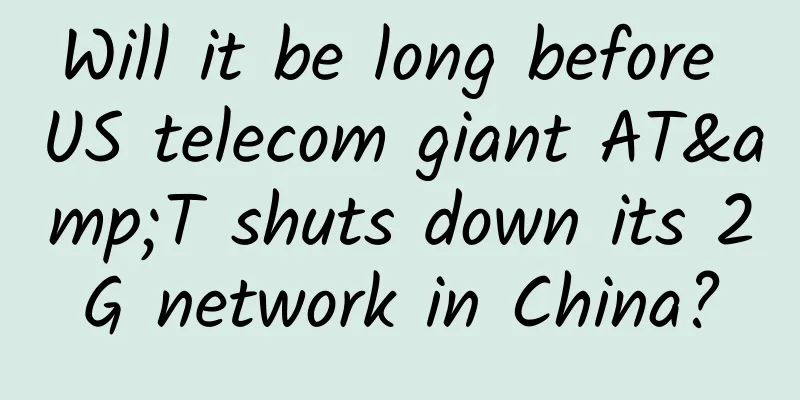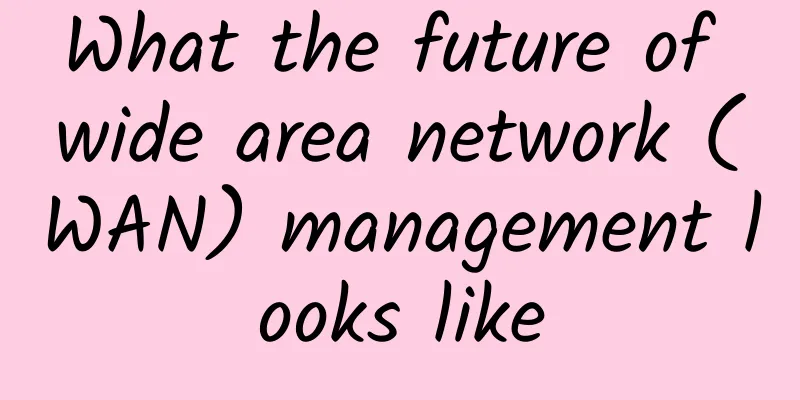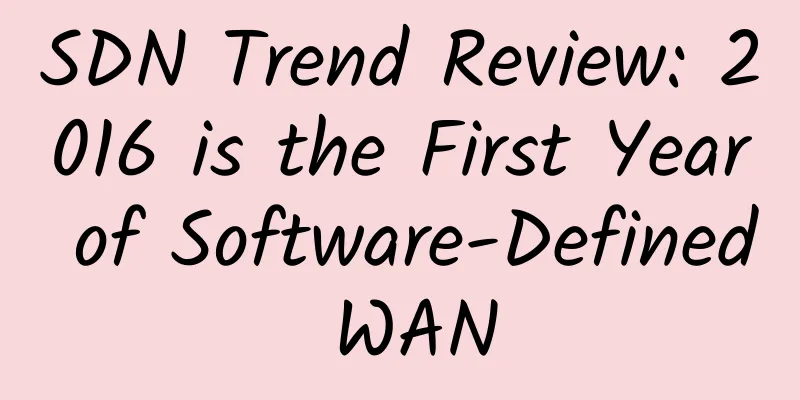What is 6G? It may appear in 2030, crushing 5G without any pressure

|
5G has already been deployed, so what about 6G? What kind of technology is it? When will it arrive? There is no doubt that 6G will eventually replace 5G. 6G is not a functional technology, and it is still in the early stages of research and development. In 2019, Ericsson CTO Erik Ekudden said in an interview: "It is a bit too early to talk about 6G now." At present, everyone's focus is on 5G. But Erik Ekudden also added that for the mobile industry, it is never too early to study the next generation of technology. Since everyone has just started to study 6G, when will it be launched? Erik Ekudden explained that it may take about 10 years for 6G to arrive. In September 2019, Huawei founder Ren Zhengfei also told CNBC that 6G is still in the early stages of research and development and it will take at least 10 years for it to arrive. Japan's NTTDoCoMo also thinks so. In a white paper published in January 2020, NTTDoCoMo pointed out that mobile connection technology will evolve at a relatively stable rate. 3G appeared in the early 2000s, 4G appeared in 2010, and 5G was promoted in 2020, so NTTDoCoMo believes that 6G will usher in a golden age by 2030.
How fast will 6G be? Sorry, we don’t know exactly how fast 6G will be until now. The final 5G standard will be set by the ITU, which started to develop standards for 5G in 2012 and recently finalized it, which is the IMT-2020 standard. Although the ITU has not yet set standards for 6G, experts have begun to speculate on how fast 6G will be. Dr. Mahyar Shirvanimoghaddam of the University of Sydney believes that 6G speeds can reach 1TB per second. When we use 5G to download Netflix movies, the next one is only a few seconds away. If we use 6G to download, we can download 142 hours of movies in one second. In May 2019, the ITU talked about the IMT-2030 standard, which described a hybrid network that was equivalent to an upgraded version of 5G, not a brand new 6G network. What changes will 6G bring? Researchers and scientists are saying that 6G will go beyond wired networks, with devices connected in a decentralized network and becoming antennas, and the network will not be controlled by a single network operation center. Because the devices are super fast, when 6G arrives, it will be possible for devices to connect instantly. In the 5G era, some applications will gradually become popular, such as driverless cars, drones, and smart cities. In the 6G era, these applications will become more powerful; at the same time, 6G will also breed some science fiction applications, such as connecting the human brain to computers, and the touch control system will be greatly enhanced. When NTTDoCoMo envisioned 6G, he said: "We can implant wearable devices and micro devices into the human body, allowing the network to connect to the human body in real time, and at the same time provide support for human thinking. This is entirely possible." NTTDoCoMo also believes that with the arrival of 6G, some science fiction scenes will become reality, and the sensor interface will make the senses come alive, making it difficult to distinguish between true and false. By then, low energy consumption will become the focus, and the network will cover the ocean and space. Most anticipated applications In 2019, the industry published a report on the outlook for 6G technology, which mentioned the three most promising applications in the 6G era: ——XR XR technology in the 5G era will still have many limitations, and it will be further developed in the 6G era. A truly immersive XR experience requires us to come up with a solution that integrates engineering requirements (wireless, computing, storage) with perception requirements (derived from human perception and physiological functions). In the engineering process (computing, processing), we must take into account the minimum and maximum perception requirements. ——CRAS The so-called CRAS refers to interconnected robots and autonomous systems, including drone delivery systems, driverless cars, drone swarms, car fleets, autonomous robots, etc. CRAS will become one of the most important applications in the 6G era. ——BCI BCI is wireless brain-computer interaction technology. We have already seen it in medical settings, where humans can control prosthetic limbs and nearby computing devices through brain implants. In the 6G era, wireless brain-computer interfaces and implants will be further developed and find more application scenarios. By then, we will communicate with the environment and other people through decentralized devices, some of which are worn on the body, some are implanted in the body, and some are integrated into the surrounding environment. The realization of any of the above three applications will bring a new round of revolution to mankind. Who is developing 6G? Just like 5G, all major companies and government agencies are researching 6G, and some have already started discussing plans. For example, Japan recently developed a 6G project and held a meeting in January 2020 to announce that it would help develop 6G standards and contribute to research efforts. In November 2019, China established a 6G research team. Finland has also set up a 6G Flagship project, which is supported by Nokia, the University of Oulu and other organizations. Finland held a 6G Summit in 2019 and plans to hold it again in March 2020, where standards and other 6G issues will be discussed. In South Korea, Samsung and LG have established 6G R&D centers, and SK Telecom, Nokia, and Ericsson have cooperated on 6G. Huawei has built a R&D center in Canada, where it has begun researching 6G technology. Ren Zhengfei confirmed that Huawei's 5G and 6G research are being carried out simultaneously, and Huawei has been researching 6G for a long time. In February 2019, US President Trump said that the United States should speed up its actions on 5G and 6G, the sooner the better.
challenge Ultimately, 6G data may be transmitted on very high frequency bands, but the higher the frequency band, the shorter the transmission distance, but the higher the data bandwidth. In other words, the higher the wireless frequency, the more information can be transmitted, but the transmission is not as reliable as the low frequency, and the signal is easily blocked. This is a big challenge for 6G communication concept architects, and some solutions have been proposed. Matti Latva-aho, a 6G Flagship researcher, said: "If you want to reach a speed of 1Tbps, the transceiver must introduce a new architecture, and the calculation must also introduce a new architecture. When THz applications come, there will be many opportunities in semiconductors, optics and materials. As the technology becomes more and more complex, we need an open source platform to cultivate the next generation of hardware and software solutions." Essentially, 6G requires us to look at technology in a whole new light. Networks will move beyond the traditional infrastructure and deploy more low-power antennas closer to users. At this point, every connected device will be both a device and an antenna. “The idea of a network as a bunch of interconnected cables will fade, and data and semantic connections will take over. In clusters of devices, network intelligence will emerge,” explains Roberto Saracco, an expert at EIT Digital. He believes that 6G will run on a real network of devices, and traditional base stations will not be able to meet the needs. In the 6G era, it will not be network operators that will bring changes to the network, but enterprises. Not only that, some core technologies will spread rapidly, such as backscatter technology, which allows low-power devices to connect through RF signals. Satish Dhanasekaran, president of the communications strategy group at Keysight Technologies, believes that "in the 6G era, instant messaging and AR experiences will be completely different from today, and they will eliminate barriers to remote communication." In some applications, people are not endpoints, such as industrial automation, autonomous systems, and large sensor networks. Once 6G arrives, precise timing will become a key feature. The ITU calls this technology "Time Engineered Communications". The goal of 5G is to minimize latency, but the "Time Engineered Communications" of the 6G era is different. It focuses on the precise time of events (such as data transmission). Roberto Saracco predicts that 6G will be a platform composed of services and service interactions, supported by parallel networks and decentralized control; the so-called 6G network may be just a concept, a virtual concept, not a real network with boundaries. Because of such changes, infrastructure owners, IoT device providers, and mobile phone manufacturers must adapt to new trends and change themselves. From a technical perspective, 6G will bring great challenges to communication engineers. Many technologies need to be innovated, such as material science, equipment science, low-energy circuits, data simplification technology, network technology, biotechnology, and communication protocols. These are not the biggest challenges. The biggest challenge is how to manage development work. Only in this way can the final network be resilient and have strong adaptability to provide support for various application developments, and ultimately allow heterogeneous networks to coexist seamlessly. In addition, there is another challenge that cannot be ignored: to keep large-scale 6G networks stable and continue to transmit data at high speed with low latency. Therefore, the development of 6G requires us to find breakthroughs in basic science and use new solutions to build large-scale ultra-stable and low-energy communication networks. |
<<: T-Mobile and Sprint to merge
>>: Interview: ZooKeeper 23 questions, see if you can answer them
Recommend
5G+Robots help accelerate the intelligent development of coal mines!
Recently, the Intelligent Coal Mine and Work Safe...
Embracing the edge: Unleashing the potential of on-board computing
Most discussions about technology transformation ...
5G network speed is so fast, the radiation must be very large
The issue of base station radiation has been wide...
AlphaVPS: Large hard disk VPS starts at 15 euros per year (or €2/month), AMD EYPC+NVMe series starts at €3.99/month
AlphaVPS is a Bulgarian local host (DA Internatio...
Outstanding Network Virtualization Solutions in 2021
Hardware maintenance has always been a major prob...
LAN vs. WLAN: Connecting the Wired and Wireless Worlds
Local Area Networks (LANs) and Wireless Local Are...
Illustrated DHCP protocol, understand how your computer/mobile phone automatically obtains IP
Hello everyone, I am Bernie, an IT pre-sales engi...
Want to port your number smoothly? Here is a guide to porting your number
Since the official implementation of the "nu...
It’s time to show the real technology! See 5G+IoT=?
The Internet of Things is already booming, and it...
When will 5G become mainstream, or is it already mainstream?
Is 5G still waiting for a "killer app"?...
Sharktech: Denver high-end 1Gbps unlimited traffic server $129/month, Los Angeles 1Gbps unlimited traffic starting at $59/month
Sharktech has launched a new high-end server prom...
HostYun: Hong Kong CN2 GIA line VPS monthly payment starts from 22 yuan, AMD+M.2 SSD high performance
Recently, someone is looking for a Hong Kong CN2 ...
As the natural environment becomes increasingly harsh, underground data centers are becoming a trend
Scientific research over the past few decades has...
I found a mistake in the book!
I discussed some TCP issues with my friends over ...
OpLink: $3.50/month-AMD Ryzen/512MB/20GB NVMe/10Gbps ports
OpLink is a foreign hosting company founded in 19...




![[Black Friday] TMThosting: VPS monthly payment up to 55% off, dedicated server 10% off, Seattle data center, Alipay support](/upload/images/67cac229924c0.webp)




